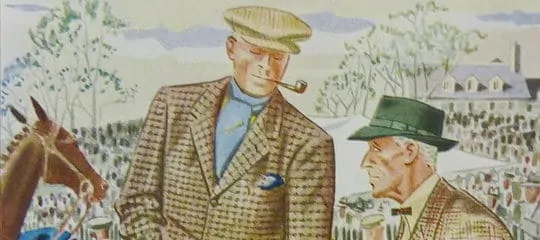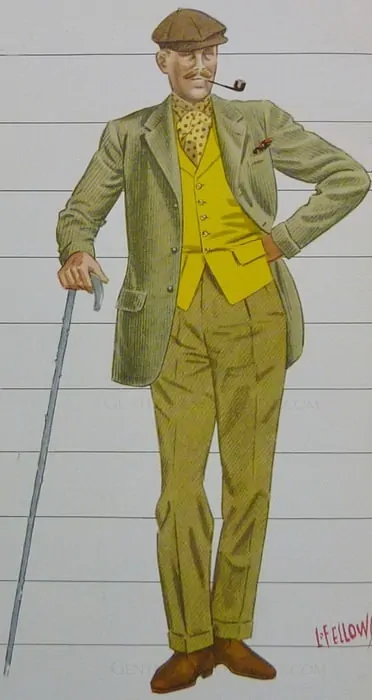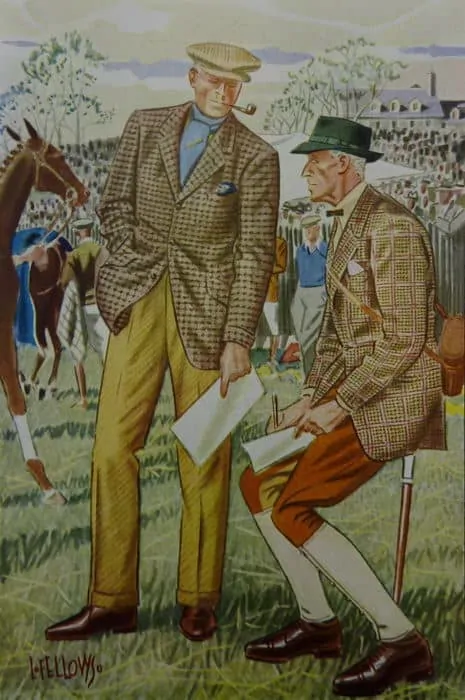
Today we are taking a closer look at informal country and horse race outfits by the famous fashion illustrator Laurence Fellows. Both were published in Apparel Arts magazine in 1938. Not only do fashion illustrations like these offer a fascinating glimpse at historical menswear, they can help provide inspiration for your ensembles today!
A Country Outfit in Green & Yellow

First, we have this gentleman in striking green and yellow. He wears a single-breasted 3 button sports coat with regular notched lapels. It features flap pockets, a regular breast pocket with a red pocket square and cuffs on the sleeve. The latter feature underlines the informal character of the outfit. The back of this wide-whale corduroy jacket in light green likely has a center vent which is typical for country garments. The jacket is combined with khaki-colored cotton trousers which have cuffs, of course. Although for today’s standards, the trousers are cut quite widely, back then these were considered to be narrow trousers! The standout piece in this ensemble is definitely the yellow “doeskin” vest. It is complimented by an ascot with red polka dots over yellow. The outfit is completed by a brown tweed cap, a pipe, brown turf boots and last but not least, a tall ash country cane or stick. (Turf means anything that has to do with horse racing).
Two Unique Checked Jackets

The scenery in the next picture depicts the Maryland Hunt Cup horse race. Back in the day, only the best horses in America participated in the race and likewise many well-dressed men made appearances.
On the one hand, the standing gentleman wears a brown & beige checked tweed 3 button notched lapel jacket with slanted flap pockets and turn back cuffs on the sleeves. He wears khaki cotton drill trousers that clearly reveal their twill structure. Again, for 1938 these are narrowly-tapered trousers. This outfit is completed by a shirt of heavy yellow silk and wool, which is just visible. Today, such shirts are very hard to find. Around his neck he wears a blue cotton ascot which is decorated with a gold pin that holds the neck wear in place. The dune-colored corduroy cap, as well as the monk shoes, make for a comfortable yet nonchalant outfit.
On the other hand, the man who sits on his shooting stick wears completely different colors and makes for an overall distinct yet likewise elegant appearance. The shepherd’s check odd jacket features a nice purplish-pink over plaid, 2 buttons, notched lapels and a deep center vent. The shirt has a soft (a regular collar opposed to a hard, starched collar) turndown collar in a subtle tan madras pattern. The slim bat wing bow tie has some regimental stripes. The colors, while quite dominant, still harmonize quite well with the overall effect. The green shade of the pork pie hat is the complementary color of the orange-tan colored riding breeches. The canvas leggings buttoned around his calves also go well with the dark brown of his shoes; the popularity of this color combination is evidenced by its common use in spectator shoes.
Altogether, we can learn from these gentlemen that even unique colors and patterns can look excellent in an outfit if they are combined well.
Reader Comments
Comments are closed.